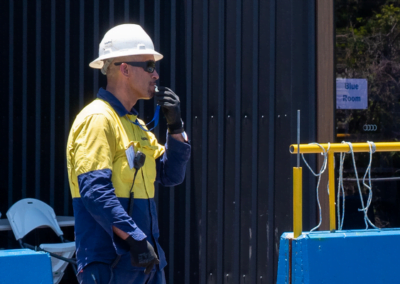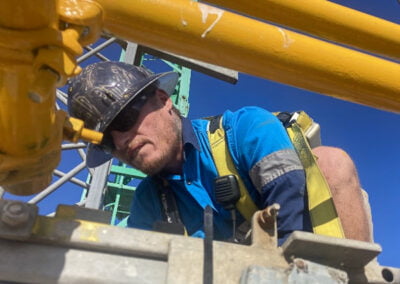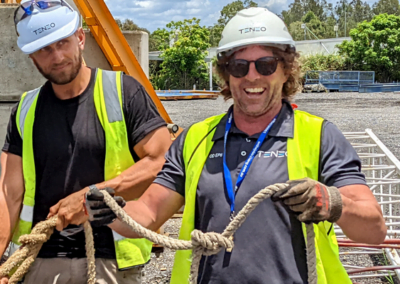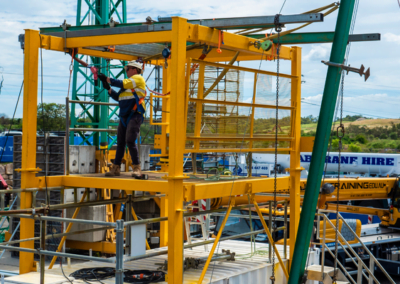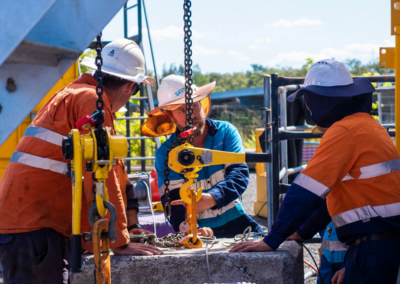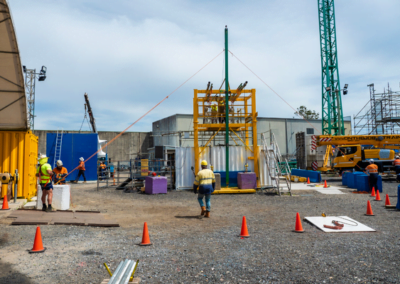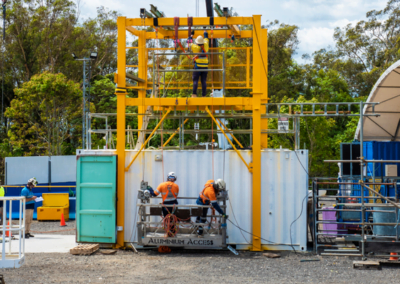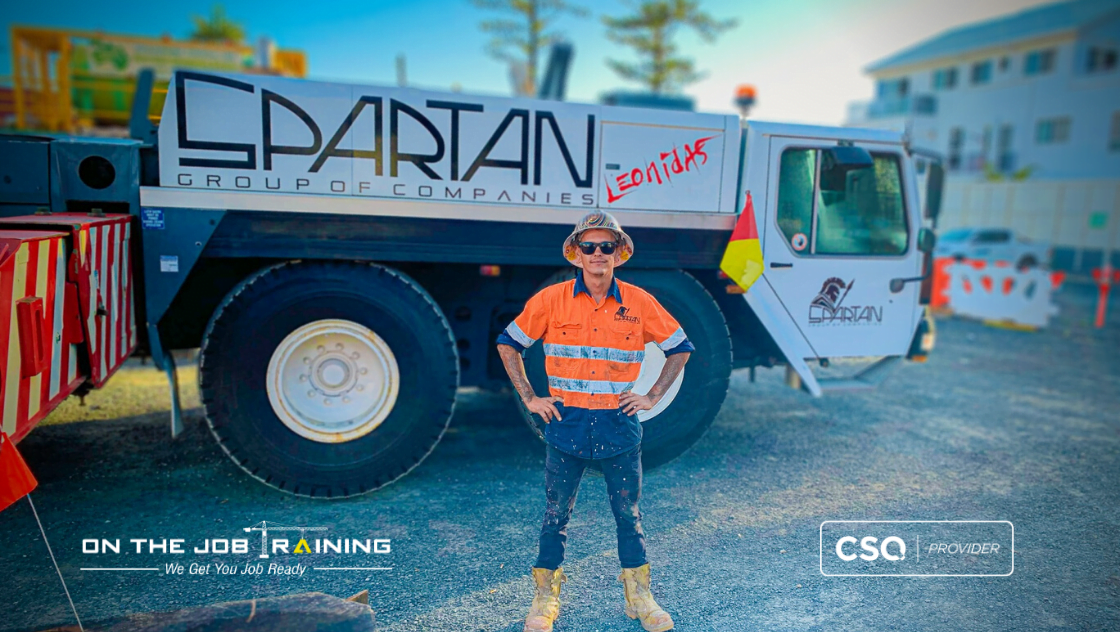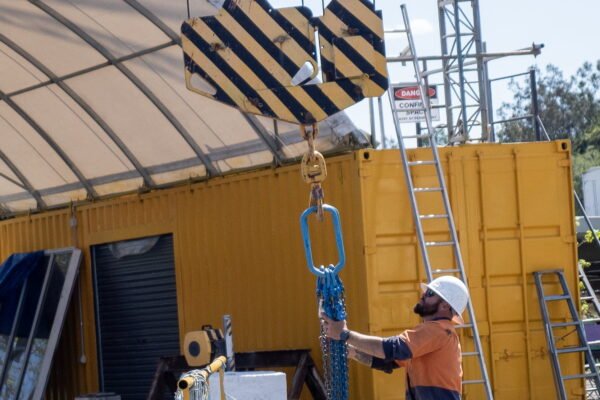FAQ: Updating Your Construction, Mining, and High-Risk Work Qualifications When Moving from New Zealand to Australia
Employment & Careers | 2 Minute Read
Written by Jimmi Nolan
Join our mailing list for 10% off your next course Subscribe
Are you a construction or mining worker moving from New Zealand or elsewhere overseas to Australia?
Discover what you need to do to update your qualifications to meet Australian standards. Our comprehensive guide covers everything you need to know about high-risk work licenses, certifications, and recognition of prior learning for a smooth transition to work on Australian shores.
A dogman, often referred internationally as a signalman, tasks include communicating with a crane operator via two-way radio, hand or whistle signals about the weight, security and movement of a load and requires specific training and assessment to gain a HRWL recognised in Australia (Unit name & code: Licence to Perform Dogging – CPCCLDG3001)
1. Why do I need to update my qualifications when moving from New Zealand or elsewhere overseas to Australia?
Australia has specific industry standards and regulations that differ from those in New Zealand. Updating your qualifications ensures you meet these standards, ensuring safety, compliance, and eligibility for employment in the Australian construction, mining, and other heavy industries that involve high-risk work.
2. What qualifications need to be updated?
Key qualifications that may need updating include:
- High-risk work licences for activities such as dogging and rigging, erecting and dismantling scaffolding, operating mobile and tower cranes, and operating a forklift or personnel and materials hoist.
- Certifications for operating various machine plants like excavators, skid steers, and rollers, which do not result in a licensed outcome.
- Training for working in confined spaces and working safely at heights.
3. How do I know which qualifications need updating?
It’s best to consult with Australian industry regulatory bodies such as Safework, registered training organisations, training.gov.au or prospective employers. They can provide detailed information on the necessary qualifications and any required updates. Additionally, professional associations in the construction, mining, and heavy industries can offer guidance.
4. Where can I update my qualifications?
Qualifications can be updated through registered training organisations (RTOs), industry bodies, and educational institutions in Australia. Our training organisation offers courses resulting in high-risk work licences and qualifications for a variety of construction, mining, and heavy industry activities.
5. How long does it take to update my qualifications?
The time required can vary depending on the specific qualifications and the courses needed. Some short courses may only take a day or week to complete, while other certifications may require several months. It’s important to plan ahead and start the process as soon as possible.
6. Is there support available to help with updating my qualifications?
Yes, many industry bodies, training organisations, and employers offer support and resources to help you update your qualifications. Our training organisation provides courses and guidance to ensure you meet Australian standards.
Alternatively, there are industry bodies such as Construction Skills Queensland (CSQ) that subsidise courses to address skills gaps, but require candidates to be substantially engaged in the Queensland building and construction industry first.
WATCH: Construction Skills Queensland (CSQ) funding teaser
7. Are there costs involved in updating my qualifications?
Yes, there are usually costs associated with courses, training, and certification updates. These costs can vary depending on the type of qualification and the training provider. Some employers may cover these costs, so it’s worth discussing this with potential employers.
8. What happens if I don’t update my qualifications?
If you don’t update your qualifications, you may not be eligible to work in the construction, mining, and heavy industry sectors in Australia. Additionally, you or your employer may face legal and safety compliance issues, which could impact your employment prospects and career progression.
9. Can I start working in Australia while updating my qualifications?
This depends on the employer and the specific regulations of the job role. Some employers may allow you to start work under supervision while you complete the necessary updates, while others may require all qualifications to be updated before you begin working.
10. Can my New Zealand or other international qualifications be recognised in Australia?
Some New Zealand or other international qualifications may be recognised in Australia through Recognition of Prior Learning (RPL). RPL allows for your previous experience and qualifications to be assessed, potentially reducing the amount of training needed to meet Australian standards. It’s important to check with relevant Australian authorities and our training organisation to understand the specific requirements and RPL process. It’s also important to note that RPL will still require a candidate to complete the relevant unit of competency and be assessed with the national assessments instruments to gain a high risk work licence.
Talk to us for advice about crossing the ditch to come to work
Updating your qualifications is essential for a successful transition to Australia’s construction, mining, and heavy industries. Ensure you meet local standards and enhance your career prospects. Our registered training organisation is here to support you every step of the way including advice on how to gain employment after training.
WE OFFER WEEKLY HRWL AND RELATED COURSES
So what are you waiting for? Enrol in a course today!
Related CONTENT
Dogman Lifting Challenge
Why not check out some of our training videos to learn more or get a feel for what to expect with our training.
Basic Riggers In Action
Check out a time lapse of some previous ‘Licence to Perform Rigging Basic Level’ students performing their practical tasks.
Tower Crane Dream: How a Bricklayer Became a Dogman
Sometimes you meet that special student, who you can immediately sense as a trainer that they are not only here to learn; they are metaphorically wearing their career goals on their sleeve. Read about Rhea’s inspiring story here.
How to become a Dogman
Ever thought about what it takes and what you need to do to become a certified dogman? We share some pro tips about how to be a successful Dogman, get hired and rehired.
Contact Us
Contact us any time using the details below. Alternatively, leave us a message using the enquiry form we will get back to you the following business day at the latest.
Phone: 07 3807 6061
Email: admin@onthejobtraining.edu.au
Address: 79 Christensen Road, Stapylton QLD 4207
Usual Business Hours: Mon - Fri 6.30AM - 5:00PM

